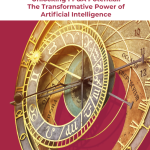This paper draws insights from our discussions within the committee, as well as over 240 face-to-face...

In the evolving landscape of Financial Planning and Analysis (FP&A), the integration of Human Intelligence (HI) and Artificial Intelligence (AI) has become crucial in enhancing decision-making processes. This powerful combination leverages the cognitive abilities of humans and the computational power of AI, enabling organisations to navigate complex financial environments with improved accuracy and efficiency.
This article explores the roles of HI and AI in FP&A, supported by findings from the 2024 FP&A Trends Survey and insights from the AI/ML FP&A Committee.
The Role of Human Intelligence in FP&A
Human Intelligence remains indispensable in FP&A for several reasons. Firstly, it encompasses strategic thinking and contextual understanding, which are essential for interpreting data insights and making informed decisions. Secondly, FP&A professionals bring a nuanced perspective to financial data, considering factors such as market trends, regulatory impacts, and organisational goals that AI might not fully comprehend.
Moreover, Human Intelligence is vital in qualitative analysis, which involves assessing non-quantifiable factors like employee morale, customer satisfaction, and brand reputation. These aspects are crucial for comprehensive financial planning and cannot be effectively analysed by AI alone. As Cassie Kozyrkov, former Chief Decision Scientist at Google, highlighted, "Good decision-makers don’t fall for outcome bias!" This principle underscores the importance of human judgment in avoiding biases that can distort financial analysis.
The Emergence of AI in FP&A
The introduction of AI into FP&A has transformed how financial data is processed and analysed. AI technologies, particularly Machine Learning (ML), enhance the accuracy of forecasts, automate repetitive tasks, and uncover hidden patterns in vast datasets. According to the 2024 FP&A Trends Survey, 65% of organisations using AI/ML rate their forecasts as 'great' or 'good', while only 40% of those do the same without AI/ML capabilities.
AI's ability to process large volumes of data in real-time provides FP&A teams with timely insights, enabling quicker and more informed decision-making. This capability is critical in today's fast-paced business environment, where agility is paramount. For instance, the survey indicates that organisations using AI/ML can enjoy a 5% improvement in time spent on high-value activities compared to those relying solely on Human Intelligence (39% vs. 34%).
Synergy Between Human Intelligence and AI
The true potential of FP&A is realised when Human Intelligence leads and AI assists, leveraging the strengths of both. Human Intelligence provides strategic oversight and context, while AI offers precision and efficiency in data processing. This collaboration results in more accurate forecasts, better risk management, and more strategic resource allocation.
A practical example of this synergy is Scenario Planning. The FP&A Trends Survey reveals that 34% of respondents who leverage AI-driven systems can run scenarios in less than a day or in real-time. It is significantly higher than the average of 22% for all respondents who use other planning applications.
Limitations of Human Intelligence Compared to AI
While Human Intelligence excels in areas requiring creativity, ethical judgment, and contextual understanding, it has limitations that AI can address. Humans are prone to cognitive biases, such as confirmation bias and outcome bias, which can skew decision-making. Additionally, humans can struggle with processing large volumes of data and identifying patterns within them. AI, on the other hand, excels in these areas, providing unbiased data analysis and handling large datasets efficiently.
However, AI also has its limitations. AI systems require high-quality data and can struggle with tasks that require a deep understanding of context or ethical considerations. Therefore, the integration of Human Intelligence and AI is essential to leverage the strengths of each while mitigating their weaknesses.
Overcoming Challenges in Data Quality
Despite the benefits, the integration of AI in FP&A is not without challenges. Data quality remains a significant hurdle, as 35% of organisations cite data quality and timeliness as major obstacles to achieving data-driven decision-making. Poor data quality leads to inaccurate forecasts and misguided decisions, undermining the advantages of AI.
To address this, organisations must invest in robust data management practices. These can include but are not limited to, consolidating data sources, standardising data taxonomy, and ensuring real-time data updates. The 2024 FP&A Trends Survey indicates that only 10% of organisations have real or near real-time data updates, highlighting the need for improved data infrastructure.
Enhancing FP&A Team Performance
The performance of FP&A teams is also crucial in harnessing the full potential of AI. The survey shows that only 35% of FP&A time is spent on low-value activities, with the majority spent on data collection and validation. By automating routine tasks through AI, FP&A teams can focus more on strategic activities, enhancing overall productivity and effectiveness.
Investment in training is equally important. FP&A professionals need to develop skills in using advanced technologies and interpreting AI-driven insights. This includes understanding AI algorithms, data analytics, and the ethical considerations of AI use.
Future Trends and Recommendations
Looking ahead, the adoption of AI in FP&A is expected to grow. While only 6% of organisations currently use AI/ML, 15% plan to adopt these technologies within the next six months, and 44% in the longer term. This trend underscores the increasing recognition of AI's value in enhancing financial planning and decision-making.
To maximise the benefits of AI, organisations should:
- Invest in Data Quality: Ensure that data is accurate, timely, and well-structured.
- Adopt Advanced AI Tools: Utilise modern cloud-based platforms and AI-driven analytics to improve forecast accuracy.
- Train FP&A Professionals: Develop the skills of FP&A teams to effectively leverage AI technologies.
- Foster a Data-Driven Culture: Encourage the use of data in decision-making processes and promote the importance of data quality.
Human Intelligence Leads, AI Assists
Despite the impressive capabilities of AI, it is crucial to understand that AI serves as an assistant for Human Intelligence in FP&A, not a replacement for it. Human Intelligence is the master, providing the strategic vision and contextual understanding necessary for sound decision-making. AI assists by processing large datasets, uncovering patterns, and automating routine tasks, thereby freeing up human professionals to focus on more important strategic functions.
Gary Kasparov, former chess grandmaster and AI advocate, aptly stated, "Weak human plus machine plus better process is superior to strong human plus machine plus inferior process." This highlights the importance of integrating AI into well-defined processes to maximise its benefits. AI enhances FP&A by providing tools that process information rapidly and accurately while humans contribute strategic insights and contextual understanding. This synergy leads to better decision-making and a more robust financial planning process.
The AI/ML FP&A Committee has been researching and analysing case studies for over six years, providing valuable insights into how AI and HI can work together effectively. You are welcome to learn more about the AI/ML FP&A Committee from our website.
In conclusion, the integration of Human Intelligence and AI in FP&A represents a significant advancement in how organisations can manage their FP&A processes. By leveraging the strengths of both, companies can achieve greater accuracy, efficiency, and strategic insight in their decision-making. Investing in the right tools, training, and collaborative frameworks is a must to fully realise the potential of this powerful combination.
As Cassie Kozyrkov, former Chief Decision Scientist at Google, emphasises, “AI can do amazing things, but it’s the Human Intelligence that ensures these things are done right.” The future of FP&A lies in the effective combination of AI’s capabilities with the indispensable human touch.
Learn more by accessing the related content below, and stay up-to-date on the latest FP&A best practices by following me on LinkedIn.
Subscribe to
FP&A Trends Digest

We will regularly update you on the latest trends and developments in FP&A. Take the opportunity to have articles written by finance thought leaders delivered directly to your inbox; watch compelling webinars; connect with like-minded professionals; and become a part of our global community.






